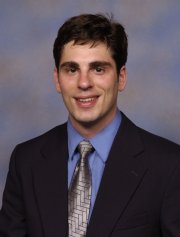Quark ... Soup?!
Christopher Schroeder, University of California, San Diego

When RHIC (aka the Relativistic Heavy Ion Collider, aka the gold atom smasher) started smashing gold nuclei together in 2000 at the DOE Brookhaven National Lab (BNL), physicists expected that the quark-gluon plasma (QGP) formed would behave like a nice, simple gas. Au contraire! What they have found is that the QGP behaves much more like fluid. In other words, not only do the “free” quarks and gluons interact, they interact quite strongly. Since the QGP is a phase of matter which only existed for an instant when the universe first formed, it is not shocking that the expectations were wrong. But what now?
RHIC has produced the QGP in hundreds of “mini-bangs” or high-energy, head-on collisions of gold nuclei which resemble the big-bang believed to have instigated the known universe. Now, we are trying to bridge the gap between the fundamental theory of quarks and gluons and the behavior observed in these mini-bangs. The driving challenges are to determine the QGP equation of state and to understand the nature of the transition to ordinary matter.
In March through June of 2007, I have spent my CSGF practicum at BNL with Frithjof Karsch and his team working on the equation of state puzzle. Using lattice gauge theory and the awesome power of the QCDOC (Quantum Chromodynamics On a Chip) supercomputers, we have calculated from the theory several key quark correlation functions which can lead us to understand the strength and character of the seemingly strong interactions among the QGP quarks and gluons and eventually to the equation of state. It is also a tantalizing possibility that in addition to the transition from QGP to ordinary matter as we lower the temperature in the calculations, we will find another transition at much higher temperatures, from fluid-like QGP to gas-like QGP.
Abstract Author(s): Christopher Schroeder


